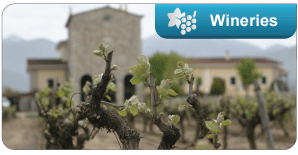Mavrodaphne of Patras
It has been over a century and a half since Gustav Clauss, a German noble, settled outside Patras and vinified his first Mavrodaphne using his own, now famous, “recipe.” Yet even today, Mavrodaphne of Patras continues to hold the title of the most popular, sweet red wine ever produced in Greece.
Certain elements—such as the medium body and the balance of acidity and sweetness—may well be the common denominator of wines bearing the “Mavrodaphne of Patras” name (PDO Mavrodaphne of Patras). However, the most important influences on determining their color, aroma, and taste are the maturation and ageing process in barrels or bottles.
Consequently, all of the Mavrodaphne of Patras wines which have been allowed to age for over a year signal, with their dark color and fruity, quaffable character reminiscent of a Ruby Port, the advent of a new style. By the time a distinguished Mavrodaphne of Patras has been oaked for a five-year period, it will have acquired a unique, bittersweet complexity and will have reined in its hefty tannins. But the explosive bouquet of dried fruit, flowers, and dried nuts along with the velvety mouth of a Mavrodaphne of Patras aged 20 years or more creates a singular and rare wine experience for wine lovers fortunate enough to try it, leaving no doubt that they have tasted a truly grand wine.
The potential of Mavrodaphne of Patras at the table is as inexhaustibly broad as are the different styles in which it produced. The wine’s fresh versions make excellent apéritifs and are also the ultimate in wine when used for cooking or patisserie purposes. Its more mature versions are unforgettable when served next to dried nuts, Stilton cheese, or robust cigars. And as far as the lengthily-aged Mavrodaphne of Patras wines are concerned, they are ideal accompaniments to any gastronomic creation made with a favorite—and notoriously difficult to match—chocolate.


